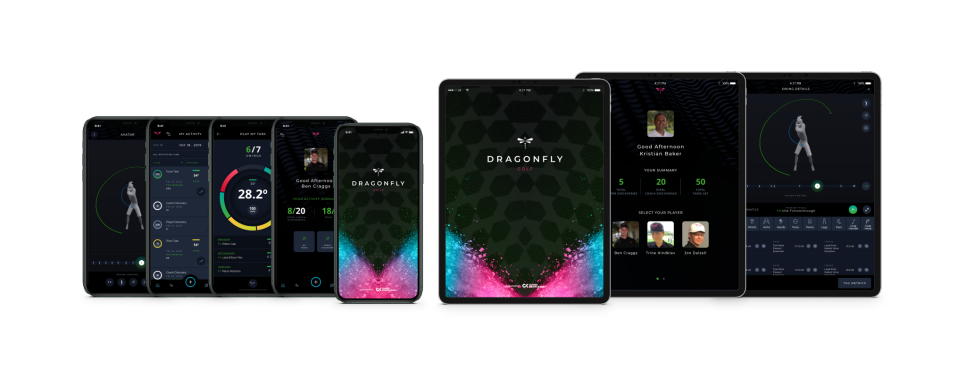News
This is the coolest product golf has seen in years ... and it might revolutionize the industry, too

ORLANDO — There are three, and only three, takeaways when encountering a product at the Inventors Spotlight, the PGA Merchandise Show's exhibition for entrepreneurs and upstarts. The observations sound harsh, but they are incontrovertible, and are as follows in descending frequency:
• "Oh no, this poor bastard doesn't stand a chance."
• "Not a bad idea, although there's not really a want for it."
• "Ah, this is a license to print money."
The third was our estimation on Guided Knowledge's smart suit technology at last year's show. Based in the United Kingdom, Guided Knowledge is a team comprised of sports scientists, biomechanists, mathematicians, engineers, golf experts and creatives, and its offering—a base-layer garment embedded with sensors that measure swing speed, angle and direction at a range of 1,000 samples per second—was as impressive a pitch as any made at the convention. A sentiment shared by the United Investor's Association, which bestowed the company the Pinnacle Award for best in show.
Yet it is only an estimation, for as viable a product or concept may be in the Inventors Spotlight, it is usually in desperate need of resources, be it infrastructure, manufacturing, distribution or simply financial assets. Without any or all of said backing, many of these products are merely high-ended theories that never come to fruition.
To our happy surprise, that fate has not been suffered by Guided Knowledge.
In the span of a year, Guided Knowledge has gone from abstract to actuality, displaying its modified and advanced technology at the 2020 PGA Merchandise Show Demo Day on Tuesday at Orange County National.
"It's really incredible how far we've come in a short period of time," says Trine Hindklev, chief marketing officer of Guided Knowledge.
The system, named the "Dragonfly Golf," is fully operational. A suit features 18 electronic devices to acquire a 3D picture of a player's swing. That information is sent to a digital coaching application, which stores hundreds of data points from each motion. This base allows player and coaches to measure one's performance and development on any smart tablet or phone.
For those with a taste for analytics, it's a dream come true.
Granted, motion-capture, 360-degree visibility is not necessarily new; that technology has been used for years in medical, architectural and entertainment fields. That includes golf as well.
Where the Dragonfly distinguishes itself is that, unlike other motion-capture sensors, this suit does not require a studio or need to be harnessed to a machine. The system and its output can be calculated from anywhere with reliable and consistent accuracy.
"Players no longer have to be in a lab or a teacher's facility," says Jon Dalzell, chief science officer of Guided Knowledge. "What used to be an appointment is now available anywhere, anytime."
This comes in handy in the communication between player and coach. A teacher can be halfway across the globe and see readings instantly from a player's movements, with the ability to send feedback and instruction just as quickly. The player, in turn, not only receives what tasks await, but the computer system sets a range based on that specific drill to monitor progression.
For example, let's say a player is not getting enough pelvic rotation in the swing. The teacher will convey the need for more turn, inputting how many more degrees he/she is aiming to reach. The DragonFly will capture the next four swings and display if that range was met.
This "lesson," and its data—not just of the pelvic turn, but all aspects of the swing—are filed away for future reference. Your swing can finally be quantified by more than your scorecard.

From a user's standpoint, perhaps what's most remarkable about the DragonFly is its ease of use. Even for the most insatiable pupil, there can be statistical overload when it comes to how the information is presented. This system makes the instruction digestible to those that don't consider themselves tech-savvy, illustrating both the swing and accompanying numbers in a clear, concise fashion.
"For years his information was there but invisible, instructors couldn't calibrate what they wanted the student to achieve," Dalzell says. "Now we can not only display it, we can use it to get where our games ultimately want to go."
The DragonFly was recently installed at the prestigious IMG Academy in fall, and a handful of PGA Tour players—most notable Pádraig Harrington—have been early adopters. Nevertheless, it remains a fledgling operation, which is why the company has made the return trip to Orlando, hoping to spread the word of its innovation.
"There has been a demand for this for years," Dalzell says. "This has been our group's true endgame; to see it come to reality, and see where it can still go, is rewarding."
Mentioned above, there are one of three takeaways when encountering a product at the Inventors Spotlight. A year after its debut, the DragonFly appears to be that rare dog whose bite matches its bark.